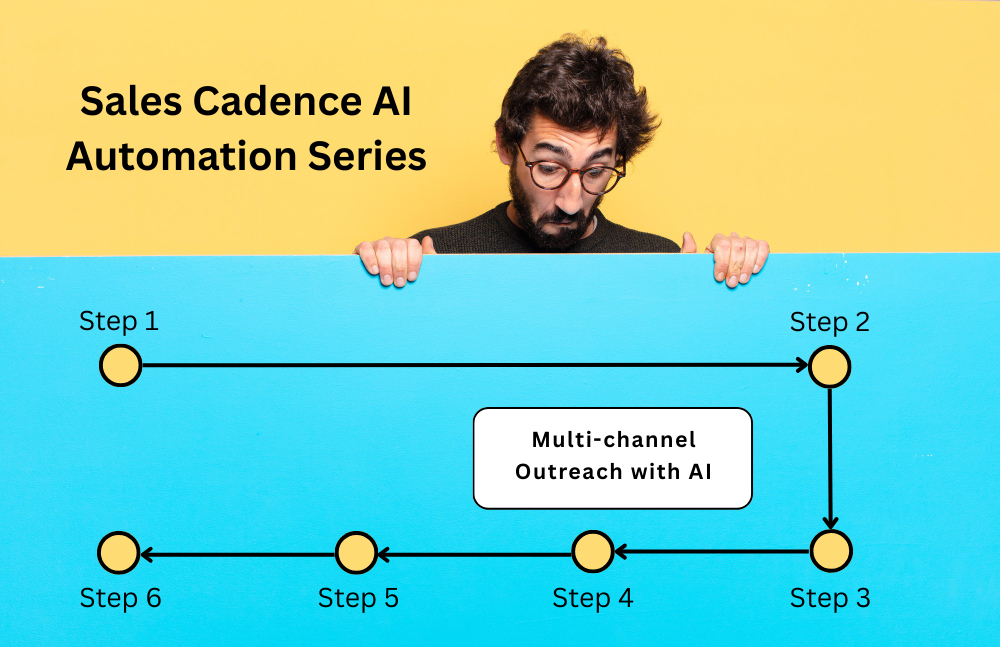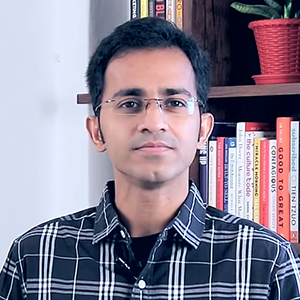In Part 3, we built the engine that writes sales messaging for us—using GPT, structured prompts, enriched lead data, and automation tools like Make.com, n8n, or LangChain. We showed how to create channel-aware content like emails, LinkedIn DMs, and follow-ups—each one sounding contextual, relevant, and human.
But personalized messages, no matter how well-written, are useless unless they’re delivered on the right channel, at the right time, in the right order.
This post is about coordination and execution. About how we take all the generated content and push it out across multiple channels—email, LinkedIn, WhatsApp, or chat—while tracking delivery, timing, replies, and next actions.
This is where automation truly feels like orchestration.
Why Multi-Channel Delivery Matters More Than Ever
No single channel is reliable anymore. Email inboxes are crowded. LinkedIn messages are ignored by default. People don’t read DMs from strangers. And yet—outreach still works when it’s layered across touchpoints.
Multi-channel outreach solves what single-channel can’t:
- It builds familiarity even when your prospect doesn’t engage immediately.
- It raises the odds that your message reaches them where they’re most comfortable.
- It gives you more surface area to deliver your value proposition in different formats and tones.
More importantly, it feels human. Because real people don’t just email. They follow up on LinkedIn. They ping on WhatsApp. They find mutual touchpoints.
When done right, this creates a presence—without pressure.
Phase 1: Designing the Multi-Channel Sequence
Before you start sending, you need to define what a complete outreach sequence looks like. Think of it like a timeline, with events unfolding over 5 to 10 days depending on engagement.
A typical flow might look like this:
Day 1: Email #1 – personalized cold email
Day 2: LinkedIn connection request
Day 4: LinkedIn message (if connected) or email follow-up (if not)
Day 6: WhatsApp message (if mobile verified)
Day 8: Email #3 with value add (case study, article)
Day 10: Breakup email with soft CTA or calendar link
Each step should be conditional. If a lead connects on LinkedIn early, you can skip the WhatsApp step. If they reply to email #1, you stop the rest. The point is to create fluidity, not rigidity.
To do this well, you must ensure your delivery system is aware of what’s been sent, what’s been replied to, and what needs to happen next.
Phase 2: Matching Content to Channels
Now that the flow is defined, you need to ensure the messages you send on each channel are written in a format that works naturally in that space.
Emails should feel like professional value-driven messages. They can be 80–120 words, with a clear CTA, and a confident but not salesy tone.
LinkedIn messages should be short, conversational, and low-pressure. Avoid pitching on first contact. Just spark interest or show alignment.
WhatsApp or SMS messages, if you use them, should be brief and direct. One line. Maybe two. Never more. Think: “Hey {{first_name}}, just sent you something via email—wanted to make sure it didn’t get lost. Worth checking?”
This is why in Part 3 we stressed generating per-channel prompts. You can’t reuse the same message everywhere. And if your system was built correctly, you should already have channel-specific versions of your outreach content waiting.
Phase 3: Automating the Delivery System
Now it’s time to set up the machine that sends these messages, tracks them, and knows what comes next.
Your system will need to do four things:
- Detect when a lead is ready for step 1 (e.g., validated, segmented, content-ready)
- Deliver the message on the right channel
- Log whether the message was sent, opened, clicked, or replied to
- Decide what happens next (send follow-up, switch channel, or stop)
Let’s explore how this can be done for each channel.
Email Delivery
Email is the core channel for most B2B teams. You can deliver emails using:
- SMTP or Gmail API if you want to fully control the sending behavior
- Mailshake, Instanly, or Smartlead if you want campaign management with built-in tracking
- Or directly from n8n or Make.com using Gmail or SMTP modules
Make sure to track open, click, and reply events via webhooks or read receipts. Most SaaS platforms give this out of the box. For your own system, use custom webhooks and update message status in your Airtable/CRM per lead.
Use this data to control what gets sent next.
LinkedIn Outreach
For LinkedIn, you’ll need automation tools to manage messages while complying with rate limits and policies.
You can use tools like:
- PhantomBuster – to send connection requests and messages via browser automation
- TexAu – another LinkedIn-safe automation tool
- Or build your own Chrome extension or Puppeteer-based script if you need tight control
When a lead is marked “LinkedIn connect sent”, wait 24–48 hours, check if the connection was accepted, and then proceed to the DM step. Again, keep these messages light, value-driven, and avoid hard CTAs too early.
WhatsApp or SMS Messaging
WhatsApp can be incredibly effective—if used with permission and moderation.
You can integrate with:
- Twilio WhatsApp API – for programmatic delivery
- 360dialog – if you’re using WhatsApp Business
- Or your own verified sender connected to a WhatsApp Cloud API
Send only to leads with verified mobile numbers from your Part 2 validation. Keep messages friendly, short, and always include an opt-out or low-pressure CTA.
For SMS, Twilio and Plivo are your best bets.
Phase 4: Building the Sequencing Logic
The secret to multi-channel isn’t just sending messages. It’s sending them in context, based on how a lead behaves.
This is where sequencing logic comes in.
If you’re using tools like Make or n8n, you can define conditions like:
- If Email #1 was sent and no reply in 3 days → send LinkedIn connect
- If LinkedIn is connected but no reply → trigger follow-up DM
- If no response to any message after 7 days → send a final email
- If reply received on any channel → stop all future steps
Your sequence should not just be time-based—it should be behavior-based.
Store all this logic in a lead status field per contact:
- Last touchpoint
- Last channel used
- Response status
- Sequence position
- Next scheduled message
This ensures that outreach is adaptive—not repetitive.
Phase 5: Centralizing Logs and Analytics
Once your system is delivering messages, you need a centralized log of every interaction. This is crucial for:
- Diagnosing deliverability issues
- Avoiding double-touching from different channels
- Providing SDRs or founders with one unified view of activity
You can store this log in:
- Airtable or Notion
- A custom dashboard (Retool, Supabase, or Google Sheets)
- Your CRM (HubSpot, Pipedrive, Close)
The format doesn’t matter. What matters is that for every lead, you can see:
- What was sent
- When and on which channel
- Whether they opened, clicked, replied
- What’s next and when
This is what transforms messaging into a true system.
Recap: Orchestrated Messaging That Feels Human
By now, you’ve moved from isolated messages to a coordinated sequence that respects timing, tone, and context. You’re delivering across multiple channels in a way that feels organic—not scripted. You’re triggering messages based on behavior, not just timers. And you’ve built the logging, syncing, and failover structure to support it.
Whether you’re using Make.com, n8n, or building on LangChain with delivery APIs, your outbound machine now mirrors how a great SDR thinks—and operates without slowing down.
What’s Coming in Part 5: Lead Scoring and Intelligent Prioritization
Not every lead should be treated equally. Some reply right away. Some click but don’t reply. Some ghost. In Part 5, we’ll explore how to build a lead scoring engine that tracks these signals and uses AI to decide who to follow up with, who to pause, and who to elevate to manual outreach.
We’ll cover:
- Open, click, reply tracking and what to log
- Scoring rules based on channel behavior
- Using GPT to analyze replies and classify intent
- Triggering priority alerts and playbooks based on scores
This is where your system starts thinking about ROI, not just delivery.
Need Help Coordinating Your Multi-Channel Outreach?
Whether you’re using Make, n8n, or want to integrate GPT-based flows into your CRM—we’ve built systems like this across SaaS and services teams. We can help plug this into your stack and train your team to run it without dependence on third-party outbound SaaS tools.
Contact us to discuss your current workflow and where automation fits in.
Or subscribe to the newsletter so you don’t miss Part 5.






